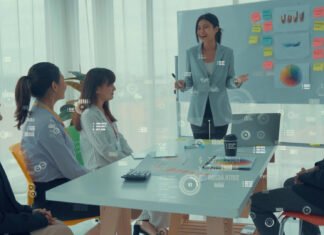Out-of-the-box integrations with Microsoft Office 365, Microsoft Teams, Microsoft Azure, Google Calendar and Salesforce, with near limitless integration capabilities to other systems and applications, enables analysis of any employee journey in the digital workplace
Sapience Analytics, the market leader in knowledge workforce management, today introduced its new integration framework for its Sapience Vue enterprise work activity analytics, insights and productivity product that correlates efforts to outcomes across any employee journey.
The demand for work analytics has grown significantly since the onset of the COVID-19 pandemic, and organizations have had to shift their resources to support shelter-in-place, work-from-home models. Distributed workforce management strategies have also shifted, moving from line-of-sight and in-person practices to digital-first remote management approaches.
Sapience, used by more than 90 enterprises across 18 countries worldwide, aggregates thousands of data points from every corner of the enterprise, every 15 seconds, to provide an unprecedented level of operational visibility around resource investments in people, processes, and technology, for a fully automated and real-time multifaceted view of Enterprise Effort and areas for improvement.
The new integration framework provides organizations with ultimate integration extensibility via the ability to connect any additional systems and applications. This enables organizations to easily customize their data integrations streams to correlate work efforts to outcomes across any and all employee journeys. The new integration framework provides a blended view of effort data with output data, enabling organizations to identify the combination of work activities that consistently produce optimum results.
The product offers out-of-the-box integrations to popular digital workplace platforms for knowledge workers, sales and IT staff. These include Microsoft® Office 365 and Google Calendar – to support email, teams and meetings analysis; Microsoft® Teams for chat and voice call analysis; Microsoft® Azure for DevOps stories/tickets analysis; and Salesforce for customer support cases and sales opportunities and leads analysis.
With Sapience Vue, organizations can gain insight into what’s happening in every functional area of the enterprise, including:
- Sales activities by team.
- The amount of time individual sales representatives are spending in email, in Salesforce or on the phone; number of opportunities created, and demos completed – and how that correlates to sales performance.
- The daily routine of agents with the best customer satisfaction ratings or highest first-contact resolution rates.
- Support/help ticket count over time, broken down by severity and resolution times—and how support teams spent their time resolving those tickets.
“Understanding what your workforce is doing, and how they’re spending their time, is one thing. But, when you can correlate those efforts to actual outcomes, that’s when you gain the insight to drive positive, measurable change,” said Brad Killinger, Sapience CEO. “We are empowering organizations to view vital data, analytics, trends and correlations to help manage the changing work experience and improve the interrelationships between people, processes and systems for improved outcomes.”
According to Dan Wilson, Senior Director Analyst at Gartner, Inc., who presented on the topic of ‘Harnessing the Power of Workplace Analytics’, “Workplace analytics are not Digital Experience Monitoring (DEM), Remote Monitoring and Management (RMM), Employee Monitoring, Productivity Monitoring, or Customer Experience (CX).
Rather, “Workplace analytics are aggregated insights derived from technology performance data and organizational context, used to improve technology adoption, employee experience, collaboration and productivity.”
Workplace analytics measures technology factors (such as performance and usage), organizational factors (such as technology alignment to business processes and employee engagement and collaboration), and insights to identify collaboration and productivity inhibitors, improve tech and business alignment and enhance the employee experience.
Key takeaways from the Gartner summit presentation1 were,
- “Without visibility into the employee’s technology experience, it’s impossible to connect measures to impact.
- Without organizational context, opportunities for engagement are lost. The result is a one-size-fits-all approach.
- Derived insights enable management of digital workplace impact and help guide the path forward.”
1Gartner, Digital Workplace Summit, Presentation, ‘Harnessing the Power of Workplace Analytics’, Dan Wilson, April 26-27, 2021.
For more such Updates Log on to www.hrtechcube.com












